How to plant a cedar?
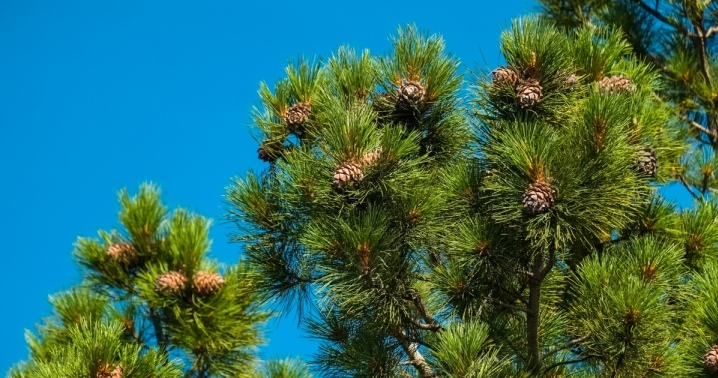
Cedar is a majestic and useful tree in every sense. Its spreading crown gives a pleasant shade, and the fruits are used in medicine and are eaten. Caring for a cedar does not require much effort, and every conifer lover can plant it. How to plant a cedar correctly so that it will delight you for many decades?
Landing dates
Cedar has many beneficial properties. The needles release phytoncides, the kernels can be eaten or used for medicinal purposes. Therefore, growing an adult cedar from a seedling is a brilliant idea.
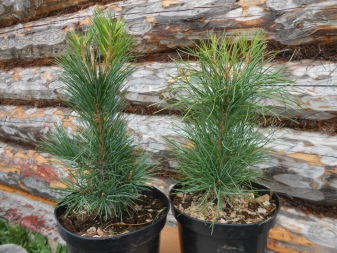

Planting a cedar in a garden is not too difficult, but for the procedure you need to choose the right time of year. Traditionally, cedar is planted in early spring, when the snow has just melted. In this case, the soil is moistened as much as possible, which means that it will be easier to grow a seedling. However, you need to carefully check whether the soil has melted to the full depth of the planting pit (about 1 meter).
It is not recommended to plant cedar in frozen ground.
In the southern regions of the country, autumn planting is appropriate, but its important condition is the absence of frosts in the next two months. In the northern regions, cedar is planted in summer, preferably in June, but no later than mid-August.
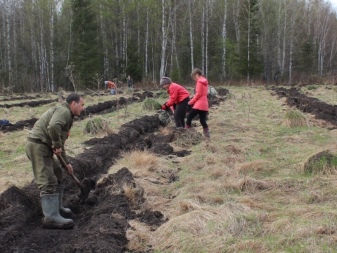
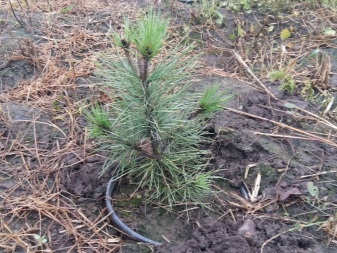
Seat selection
If you want to plant a cedar in your country house, then choosing the right place should be your top priority. For this breed, you must select the area with the lowest traffic. Cedar does not tolerate dense soil in the garden, as well as gas pollution and smoke.
Landing near the freeway will not bear fruit - the cedar will most likely die.
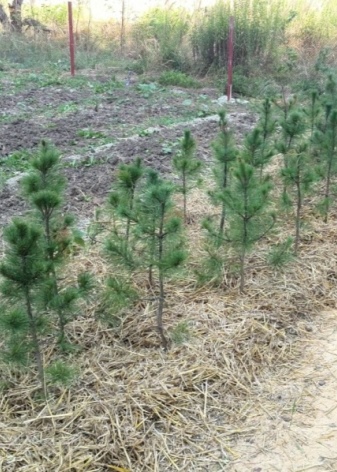
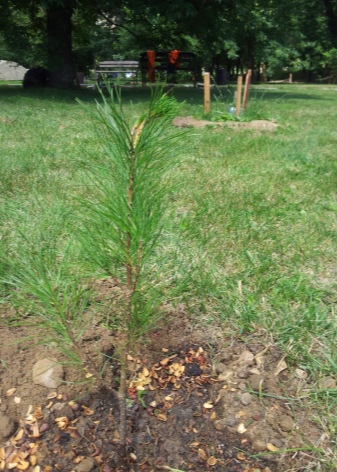
Shrubs must grow near the seedling in the summer cottage, since it does not tolerate open windy places. Adequate illumination is also important, since with optimal light conditions the tree will have the most decorative appearance. It is better to plant these conifers away from other large and spreading trees so that they do not obscure the sunlight for the seedlings. But it is not worth mowing the grass near a young plant in the spring in the first two years after planting. Then it will be partially protected from the bright scorching sun.
After 7-8 years of life, trees can already grow in partial shade.
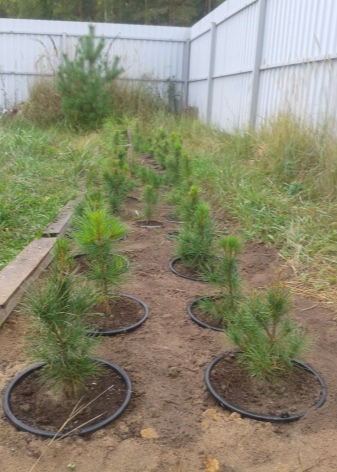

To prevent the small cedar from being damaged, it is worth making a fence around it, since in the tall grass it can hide from sight. Cedar seedlings should not be placed near capital buildings, that is, at a distance closer than 3-4 meters. Otherwise, a strong root system can destroy the foundations of buildings. The place under the cedar should not be dry, otherwise you will have to constantly moisten the earth in the near-trunk circle, even an adult specimen.
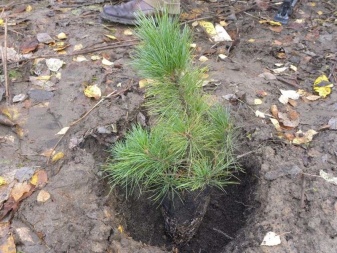
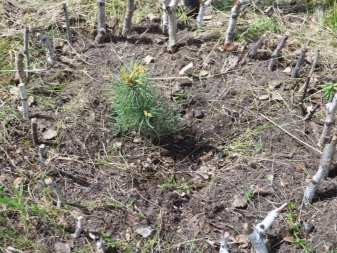
It should be remembered that the survival rate of young cedars is not too high - 50%. Proper planting and subsequent careful care will help to grow a good adult specimen of cedar from a seedling, which will begin to bear fruit in 30-60 years, depending on growing conditions.
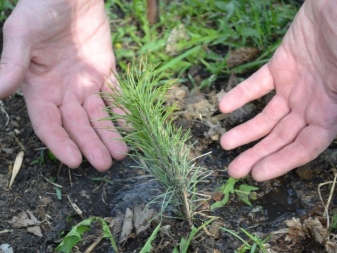
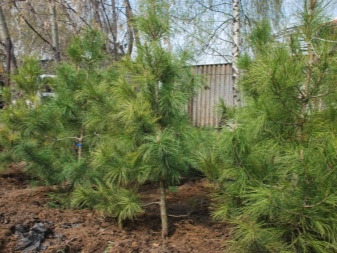
Step-by-step instruction
A cedar can be planted not only by a specialist, but also by an ordinary lover of conifers. It is important to remember that specimens that are at least 5 years old will take root best. Younger trees are highly susceptible to various diseases and also attract pests. Please note that cedar grows slowly compared to other conifers. Strong shading, which can occur with the adjacent growth of other fast-growing seedlings, should not be allowed.

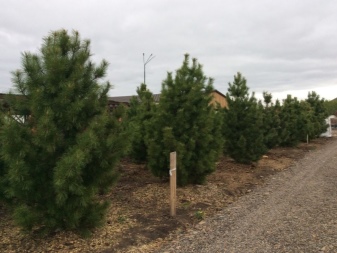
In order for the cedar to grow healthy and strong, you need to follow certain step-by-step instructions.
- Conduct quarantine measures at the site. Young cedar seedlings are often attacked by insects. To avoid such problems, it is necessary to treat all plants on the site with insecticides.
- Dig a planting hole at least 3 m from buildings and 8 m from other trees with a spreading crown. Its dimensions are approximately 1 meter deep by 1.8 meters in diameter. Such a large hole will serve to accommodate and further grow the entire root system of the seedling. Ideally, dig a hole in late autumn so that its surface has time to freeze well. In this case, the risk of root rot and other diseases in the future seedling will tend to zero. In areas where groundwater is close to the surface of the earth, cedar is planted in a bulk mound with a diameter of 1-3 m and a height of 0.5-1 m, depending on the size of the seedling.
- Lay drainage at the bottom of the pit. For it, you can use any familiar material, for example, gravel, expanded clay, shell rock. The drainage layer should not be less than 15 cm, based on the requirements of an adult tree.
- Fill the 0.8m hole with a mixture of fertile soil, sand, and compost. Clay soil requires additional sand. If the soil is sandy loam, then no sand should be added. Ideally, you should add two glasses of ash or compound fertilizer to the pit. It is also recommended to add a root growth stimulator "Kornevin" to the planting pit. The entire mixture should be carefully dug up. Put a small mound of earth in the center, where you will plant the future cedar. The ground will sag after watering, and the embankment will help level the ground.
- Remove the seedling from the container, being careful not to damage the roots and buds. If the apical bud is damaged, the seedling may die. Place a properly spread root system in water if it is closed, as drying out of the roots during transplantation is unacceptable. Seedlings with an open root system must be especially carefully protected from drying out. To do this, the roots are dipped in a clay mash or wrapped in moss and wet newspapers.
- At this time, form a tapered depression in the center of the planting mound. It should match the size of the root system. The advantage of planting in a mound is that over time, with regular watering of the seedling, the earth will begin to sink. It is impossible to allow a small cedar to end up in a hole - it must grow on a hill. Then the illumination and humidity will be optimal.
- If, over time, the cedar began to fall into the hole due to subsidence of the earth, it is necessary to make a discharge groove. Then stagnation of moisture, adversely affecting the root system of the seedling, can be avoided.
- Determine where the south side of the site is. The less developed part of the cedar seedling should face south. Then the crown will become more symmetrical.
- Place the seedling in the cone and sprinkle with earth, crushing it with your hands from time to time. Before planting, small cedar seedlings should be fixed with a stick driven into the center of the planting pit.
- Form an earthen roller around the seedling and water abundantly (at least 10 liters of water for a 2 year old seedling and about 50 liters for a large size). Water is poured into the near-trunk circle in parts so as not to blur the top layer.
- Apply a layer of sawdust and compost mulch. It will protect the topsoil and, accordingly, the root system from drying out.
- To get rid of weeds in the trunk circle, it is recommended to sow it with white clover. This symbiosis has a positive effect on the development of the cedar.
- Try not to plant a single cedar on the site. He loves the neighborhood of his fellows, it is better to plant a tree in groups of 3-4 copies.



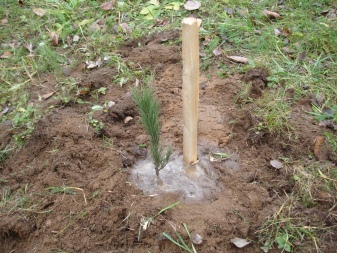
Follow-up care
After planting, the cedar must be looked after. This will be especially difficult in regions with hot climates, where abundant watering will be simply necessary. For the rest, caring for the tree will consist of the following procedures.
- Disease and pest control. It is important to check your pet regularly for the first signs of pests and diseases. There are a lot of insects that try to harm the cedar, more than 100 species. Pine cone fire is especially dangerous. You can get rid of it with the help of insecticides by double spraying at the beginning of flowering with an interval of a week. White bloom is a frequent occurrence in young cedar seedlings. It is caused by a pest - Siberian hermes. The plaque does not bring significant harm, but it slightly retards the growth and development of the tree. It must be washed off with a weak solution of ordinary laundry soap. The root sponge of the trunk is very dangerous. When it appears, the tree should be removed, since the disease is easily transferred to neighboring specimens. It is recommended to treat young seedlings with copper sulfate for the prevention of fungal diseases. The trunk circle should be cleared of aggressive weeds and fallen leaves in time in order to prevent the development of a focus of diseases. Weeds in a nearby area can provoke a dangerous disease such as rust. As a result of the disease, the needles turn yellow and fall off. To get rid of the disease, it is necessary to remove all affected branches.
- Watering. In the first year after planting, cedar must be watered very often, including the crown. This should be done only in the early morning or evening, when there is no sun. Even an adult cedar is picky about soil moisture conditions. Therefore, it also needs to be watered as the earth dries up in the trunk circle. Watering requires ambient temperature water. Ideally, you should collect rainwater and water it. Reduce watering in the fall and complete it during the dormant period, that is, in winter. In especially dry years, it is recommended to spray with cedar needles to remove dust from it and saturate it with moisture. Adult specimens of cedar are watered about once a week, since their root system has already grown deep enough and reaches the groundwater. Cedar is an evergreen coniferous plant, but it has its own peculiarity - once every three years, its needles fall off. Do not be afraid of this event, it happens mainly in the fall. If the needles have turned yellow and fell off in summer, then there is a possibility that the cedar is suffering from a lack of moisture.
- Loosening and mulching. It is not recommended to loosen the soil around young seedlings, since the root system is located close to the soil surface and is easily damaged. Instead of loosening, add a layer of sawdust and leaf mulch annually. This procedure contributes to the formation of beneficial microbiota and the maintenance of optimal moisture content in the upper fertile layer of the earth.
- Fertilizers. Top dressing has a beneficial effect on the growth and development of the tree. It is especially important to fertilize the cedar well when it begins to bear fruit. In the spring they are fed with organic fertilizers, and in the winter - with mineral fertilizers. The best fertilizer for cedar is compost. Top dressing should be applied to the surface layer of the soil, shallowly loosened, remembering that some of the roots of the cedar can lie close enough.
- Pruning. Cedar develops a good crown shape on its own. Old and diseased branches should be pruned, but the procedure must be carried out very carefully - the trunk must not be damaged. Also, the cedar reacts very badly to the breakage of the kidneys, and if the central one is damaged, it can even dry out. If the crown needs to be given a special shape in order for the cedar to become a special element of landscape design, then this should be done with a special garden pruner. The branches are pruned in early spring, before the beginning of the growing season. Trees under the age of five must not be cut. After pruning, the cuts are treated with a special garden pitch.
- Collection of fruits. In late summer or early spring (depending on the climatic zone), pine nuts ripen and fall together with cones to the ground in strong winds.If this does not happen, you should get a stab, which I hit on the trunk to fall off the cones. During harvesting, you need to collect cones from the surface of the ground, and not from the tree. It is dangerous to bend branches, to tear off cones, since the cedar reacts very badly to such manipulations. Remember that the larger the buds of your tree, the less hardy it is.
- Wintering. Although the cedar is a frost-resistant breed, in the first two years of planting, you should carefully consider the seedling. You should cover the young cedar with spruce branches, and mulch the trunk circle with sawdust. Then the plant will not freeze and will develop normally.
- Graft. Cedar begins to bear fruit quite late - 30-60 years after planting. Grafting from an adult tree, from which the crop is regularly harvested, will help speed up the onset of fruiting.
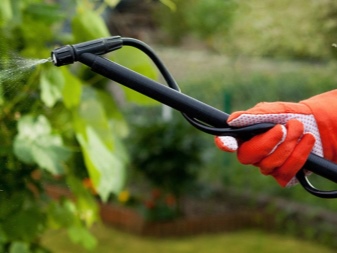

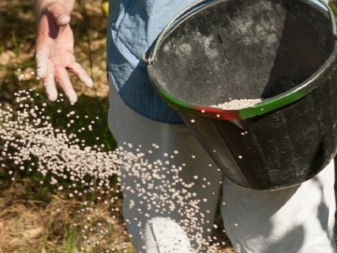
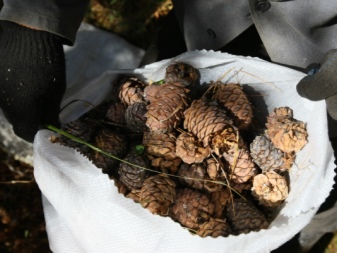
For information on how to properly plant a cedar, see the next video.



































































Useful information, like it.
The comment was sent successfully.